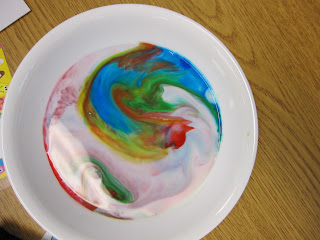Skype is one of those wonderful free tools that never ceases to amaze me. We have been skyping in my K classroom on a regular basis since 2008. Originally, we started using Skype as a way to connect with other classrooms and find out about their schools, daily lives, and cultures. The students and I were both so excited to have a window into another classroom! However, our calls were often kind of random with no specific purpose in mind. Just the experience of using skype and chatting with learners and teachers from around the world was enough for us.
That all changed when I attended a session entitled "Around the World in 80 Schools" in 2010 (Teacher 2 Teacher Conference in Bow Island, Alberta) with
Silvia Rosenthal Tolisano. She shared how she turned a Skype call into a learning call in her classroom with important pre- and post-call activities, and a variety of roles assigned during the Skype call. Every learner in her classroom fulfilled an important function and numerous curricular outcomes were met whenever her classroom connected via Skype. Please click on this link to view this
PDF file on turning a Skype call into a learning call--it's a great resource!
Although Silvia's model was a bit advanced for my junior and senior kindergarten students, it had a profound impact on how I wanted to infuse Skype into my students' learning. In the next couple of years, Skype became a mainstay in my technology toolbox. My colleague Leah Obach and I partnered on a number of collaborative projects involving Skype and other tools, such as:
Superheroes: my K class partnered with Leah's Grade 11 ELA class. First, all students used
Big Huge Labs to create trading cards to introduce the students in both classes. The next step was to brainstorm the qualities of heroes and villains using a collaborative brainstorming tool,
Cacoo. My K students designed their own superheroes using paper and markers, and we photographed and posted them to our
classroom blog. Each of Leah's students chose a superhero and wrote a short story for that superhero (lots of important lessons about audience, level of language, etc). They used the website
Hero Machine to create a digital picture of each superhero, then narrated it with
Audacity. Using Windows Movie Maker, the students created a digital story of each superhero. These digital stories were transferred to classroom iPods where they could be listened to over and over at a listening centre. The highlight of the project was the use of Skype. Each day, a different high school student skyped in for Skype Storytime. The student introduced him/herself then read the story to the students via Skype. My K students were so excited and engaged, especially when their superhero was being featured. It was a very successful project, providing students with a real audience and feedback for their work.
Digital Team Teaching with Skype: And then my colleague was transferred to Grade 1. We knew that it would be easy to find reasons to connect, but we wanted to take it to the next level. And digital team teaching was born. We began to use Skype (and occasionally Smart Bridgit) to connect our classrooms for actual learning experiences. Leah and I took turns leading these learning experiences via Skype while the other teacher supported. Kindergarten learning experiences often provided important practice and review for Grade 1 students, while activities from Grade 1 stretched and enriched my kindergarten students. Math games and story problems worked especially well for digital team teaching using the screen sharing feature. This project is ongoing, with the goal of small groups of students skyping into the other classroom as a means of differentiating instruction.
And today, we skyped with a junior kindergarten class from the
Mandell School in New York City. They located us on
Skype in the Classroom, and contacted us to see if we would be interested in working on communities outcomes from the social studies curricula. It was a perfect fit for us. Have a look at some of the slides we created to share with our New York friends.
Our questions and the answers we found out:












